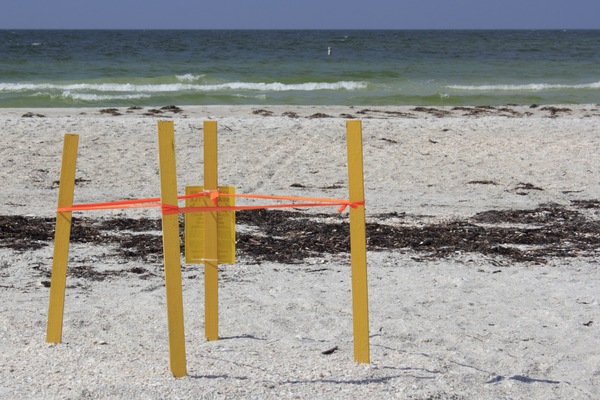
April 19, 2021
Media contact: Pat Kuehn, CPRC
Community Information Specialist
386-822-5062, ext. 12934
Turtle nesting season officially starts May 1, which means hundreds of sea turtles will be emerging from the surf to lay eggs on the beach in the next few months.
Although leatherback and loggerhead sea turtle nesting has already begun on other beaches in southern and central Florida, Volusia County managed beaches have yet to receive their first nest. With water temperatures warming up quickly, nesting females should arrive soon.
After incubating in the sand for about two months, tiny hatchlings will break free and make an often treacherous crawl to the ocean, dodging predators, holes, trash and beach furniture. Tragically, some will also be led into harm's way by beachfront lighting.
It's estimated that only about one in 1,000 to 10,000 hatchlings will make it safely to sexual maturity, which may take 10 to 25 years.
Ryan Chabot, Volusia County's sea turtle Habitat Conservation Plan program manager, wants to improve those odds, and he could use the public's help.
“We want to make Volusia County beaches safe, inviting places for humans and sea turtles,” he said. “We encourage residents and visitors alike to respect our wildlife; let the night provide the light; and keep our beaches clean, dark and flat. ”
“Artificial lighting is a human-made threat we can correct with minimal effort,” he added. “Bright lights can discourage adult female sea turtles from nesting and confuse hatchlings, leading them away from the ocean and into streets or storm drains. By simply redirecting lights away from the beach and turning them off when not in use, beachfront residents can allow natural moonlight and starlight to guide nesting females and hatchlings and keep them out of danger. ”
The county's Environmental Management Division works with beachfront property owners throughout the year, educating them about the sea turtle lighting ordinance. During the nesting season, residents are required to, shield, redirect or turn off lights so they don't shine on the beach.
Residents and visitors can also help save sea turtle lives by following these tips on the beach:
Nesting season runs through Oct. 31. During a typical year, 400 to 500 nests are laid in Volusia County. Last year's season was the third highest nesting season on record, with 902 nests counted.
For more information about Volusia County's sea turtle program, call 386-238-4668 or visit www.volusiaseaturtles.org. For questions about sea turtle-friendly lighting, call 386-238-4773.